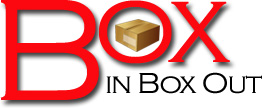The Last Ice Dealer in Town
This is another perceptive post from our good friend, Bill Lapierre. While specifically about consolidation in the print catalog business, the message is equally relevant for almost any business- including pure-play, e-commerce retailers.
The Last Ice Dealer in Town–
I received a very sad email a few weeks back from a subscriber to this blog, and since I have not seen anything about this news in any of the industry trades, I want to mention it here. The subscriber, who had been an employee of B&W Press for 15 years, was writing to say that after 49 years of business, B&W was closing its doors last week. For those of you not familiar with them, B&W Press, located just outside Boston, was the largest catalog order form printer in the US for many years. Many of the companies I worked for and many of Datamann’s clients used them for their order forms. Now they are gone. Another victim of the economy’s and society’s rush away from catalogs.
This news got me thinking about competition. There are still many catalogs left that receive a large volume of orders through the mail, some containing checks. Using order forms will still make sense for these companies. I’m sure that there are other printers that can supply them with those needed order forms. But, at what cost? There’s a little less competition now without B&W.
The same thing is happening throughout our industry. There are just a few large catalog printers left – we are basically down to four – that handle large volumes. Regardless of whether you think they are good or bad, there are only four viable consumer co-ops – Abacus, Datalogix, I-Behavior and Wiland. In B2B – there’s just one co-op, Merit Direct. If the history of the past 10 years has taught us anything, it has taught us that there will be more consolidation. So, what happens when there are three printers and three co-ops? And then just two? Where will the competitive pricing be? Where will the service be? Do you really want to be in a spot where you are buying ice from the last ice dealer in town?
Look at what’s happening with Facebook, whose ad revenue jumped over 60% in 2014 to $5.3 billion, up from $3.3 billion in 2013. Their marketshare for overall US display ads increased to 24%. OK, so that still leaves room in the market for others. But what happens when Facebook owns 50% of the market? Where will the competitive pricing be?
Many of you are already getting hurt, or at least having difficulty adapting, to shifts in the PPC world. For some of you, Facebook’s CPMs have tripled, while Google Product Listing costs have more than doubled. Those increases sure make a 3% increase in postage rates look like a bargain. And yet, as an industry, we panic at the news of any type of postage increase, while we rarely hear a peep about these other price increases.
Twenty years ago, when paper prices went up, we’d get a detailed explanation of how this was caused by a paper mill in East Hungerdunger, Wisconsin having closed, and how the paper companies were tightening up supply. This would force you to get your paper order in early, and your printer would tell you what a great deal they just secured for you. Having bought paper at only a 15% increase instead of the feared 17% increase made you feel that you had won some strategic victory, and made you think your printer was your buddy.
Rising PPC prices are simply tied to demand – there are a multitude of companies willing to spend a lot of money advertising their products – which also happen to be your products – and they don’t have the added expense of a catalog. So they can spend a little more than you. Some will argue that if your cost to acquire a new customer (CPNC) is still acceptable, it should not matter to what level the PPC rates increase. That’s true.
However, the problem for many of you is that you still think in terms of a “catalog budget”. You could always plan for a postage or paper increase. If nothing else, it was predictable and often announced months in advance. You had control over your catalog circulation and its related costs. That luxury of predictable planning is absent in the online world of PPC and SEO, especially as the market continues to grow, and the rush is on to grow mobile ads. Many of you have difficulty with “planning” in the more fluid world of online advertising, even though you’ve been doing it now for 10+ years.
Let’s go back to my analogy about buying ice. Eighty years ago, my grandparents bought ice for their icebox. Like their neighbors, they eventually moved up to the world of electric refrigeration. One by one, the ice dealers in town closed. If you were the last guy left in town selling ice, you knew where this was going to end, and knew it would not be good for you, your staff, or your customers. You weren’t very motivated, and no one was motivated to work with you because they could see how the story would end as well.
Yes, catalogs are still hanging in there. But each time another major supplier to the industry disappears, and there’s a little less competition, it raises your collective costs, and makes catalogs just that much less competitive compared to companies that do not rely on catalogs. You need to adopt a more fluid catalog growth strategy, one that anticipates the ups and downs of the online world because you don’t want to be caught being the last customer of the last ice dealer in town. That’s what we are all up against, and don’t lose sight of it.
by Bill LaPierre
VP – Business Intelligence and Analytics
Datamann – 800-451-4263 x235
blapierre@datamann.com



